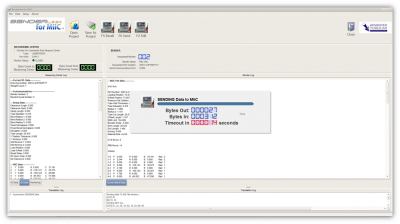Difference between revisions of "Benderlink for MiiC 3.5"
| (26 intermediate revisions by one user not shown) | |||
| Line 1: | Line 1: | ||
| − | |||
| − | |||
<table> | <table> | ||
| − | <tr> | + | <tr cellpadding=10> |
| − | <td> | + | <td width=300> |
| − | + | [[image:Blinkmiic_logo.jpg|300px]] | |
| + | ==Version 3.5== | ||
| + | Release Date: August 14, 2007<br><br> | ||
| + | * Back to [[Benderlink for MiiC Version Updates]] web page | ||
| + | </td> | ||
| + | <td width=400> | ||
| + | [[image:benderlink_miic_v5.png|400px]] | ||
| + | </td> | ||
| + | </tr> | ||
</table> | </table> | ||
| − | |||
| − | + | Connect to MiiC Benders, edit data, send solid models, save the MiiC data to your computer.<br><br> | |
| + | __NOTOC__ | ||
| + | ===New Persistent Inversion Sign=== | ||
| − | + | When inverting XYZ coordinates, operators requested that Benderlink for MiiC track and display the state of the inversion. This is indicated by a bright orange label that reads "INVERTED" on the XYZ menu. | |
| − | + | ||
| − | + | ||
[[image:Blinkmiic_invert_sign.jpg|400px]] | [[image:Blinkmiic_invert_sign.jpg|400px]] | ||
| − | + | The inversion state is persistent. This means that it is stored along with the file data in the Benderlink for MiiC data file format so that you can always know this state - even at a later date. | |
[[image:Blinkmiic_invert_sign2.jpg]] | [[image:Blinkmiic_invert_sign2.jpg]] | ||
| − | The | + | <br><br> |
| + | |||
| + | |||
| + | ===Any Number of XYZ Points Now Allowed=== | ||
| + | |||
| + | The previous limit was 52 points because Supravision would only allow up to 50 bends. However, we've opened that number up so that it can now expand to any value. The internal memory for the MiiC XYZ data expands to allow for any point count that can fit into memory. The incoming Supravision part data can be any bend count, and Benderlink will handle it. (Not all programs can create a Supravision file with more than 50 bends. Our newer software packages can - like the latest version of [[TubeCAD Pro]].) | ||
| + | |||
| + | [[image:Blinkmiic_pointcount_main.jpg|400px]] | ||
| + | |||
| + | <b>PART SPLITTING:</b> The benefit of allowing for more points is the new ability to invert and '''keep''' the end bends of parts with a higher bend count than MiiC can handle. This means that data is not lost inside Benderlink for MiiC even if it exceeds the capacity of the MiiC control. | ||
| + | |||
| + | [[image:Blinkmiic_pointcount.jpg]] | ||
| + | |||
| + | <br><br> | ||
| + | |||
| + | ===New Skin Interface=== | ||
| + | |||
| + | This version of Benderlink features a new skinned interface. | ||
| + | |||
| + | [[image:BlinkMiic.jpg|400px]] | ||
Latest revision as of 16:47, 30 July 2014
Version 3.5Release Date: August 14, 2007
|
Connect to MiiC Benders, edit data, send solid models, save the MiiC data to your computer.
New Persistent Inversion Sign
When inverting XYZ coordinates, operators requested that Benderlink for MiiC track and display the state of the inversion. This is indicated by a bright orange label that reads "INVERTED" on the XYZ menu.
The inversion state is persistent. This means that it is stored along with the file data in the Benderlink for MiiC data file format so that you can always know this state - even at a later date.
Any Number of XYZ Points Now Allowed
The previous limit was 52 points because Supravision would only allow up to 50 bends. However, we've opened that number up so that it can now expand to any value. The internal memory for the MiiC XYZ data expands to allow for any point count that can fit into memory. The incoming Supravision part data can be any bend count, and Benderlink will handle it. (Not all programs can create a Supravision file with more than 50 bends. Our newer software packages can - like the latest version of TubeCAD Pro.)
PART SPLITTING: The benefit of allowing for more points is the new ability to invert and keep the end bends of parts with a higher bend count than MiiC can handle. This means that data is not lost inside Benderlink for MiiC even if it exceeds the capacity of the MiiC control.
New Skin Interface
This version of Benderlink features a new skinned interface.






